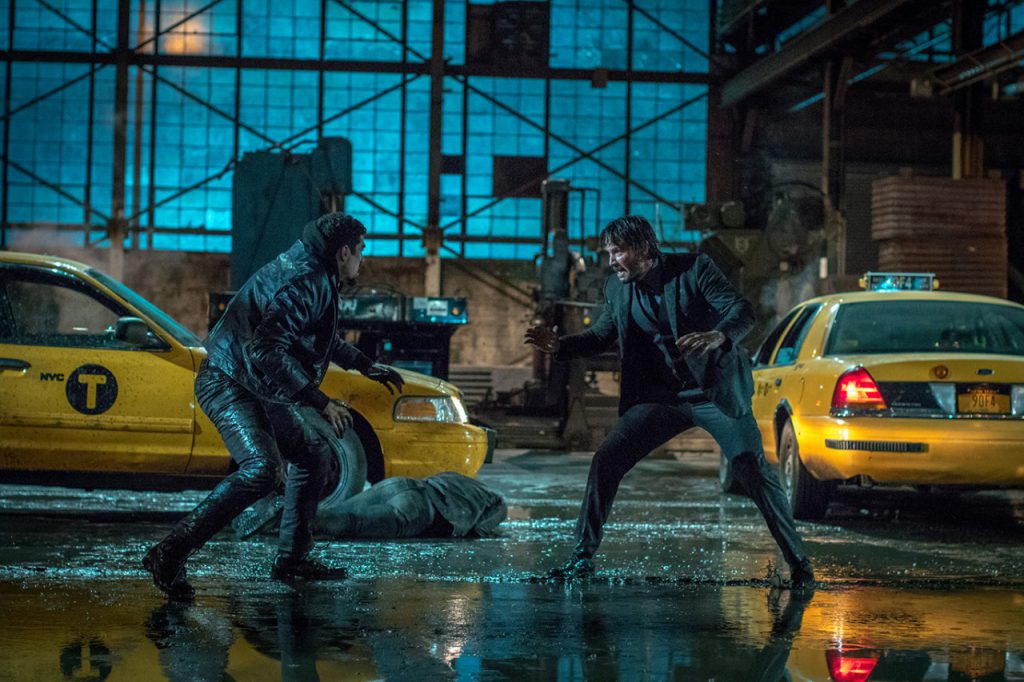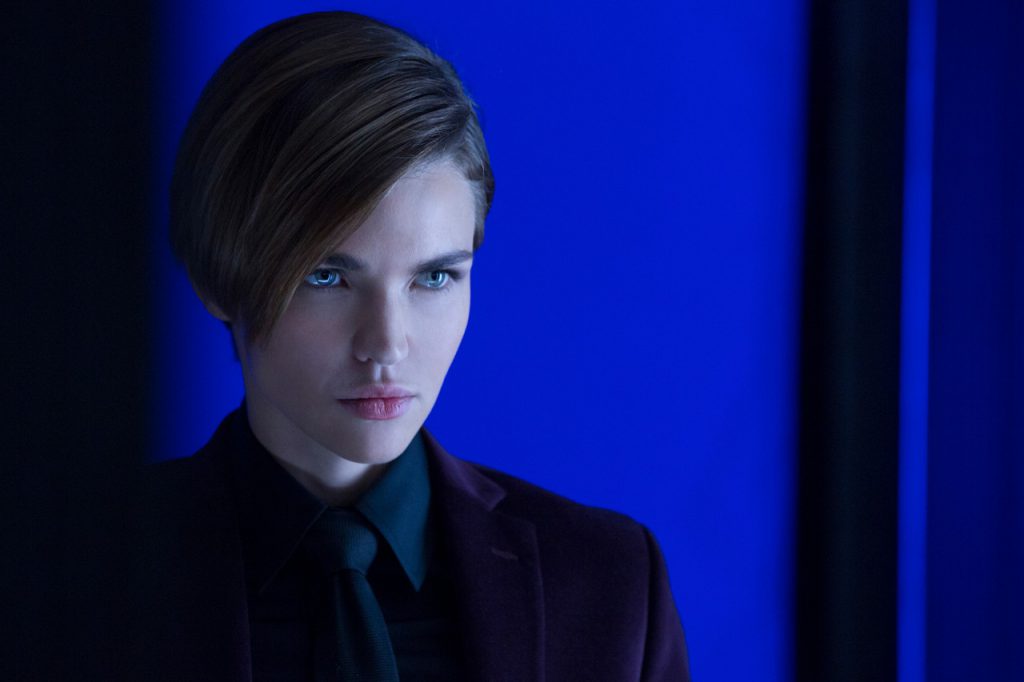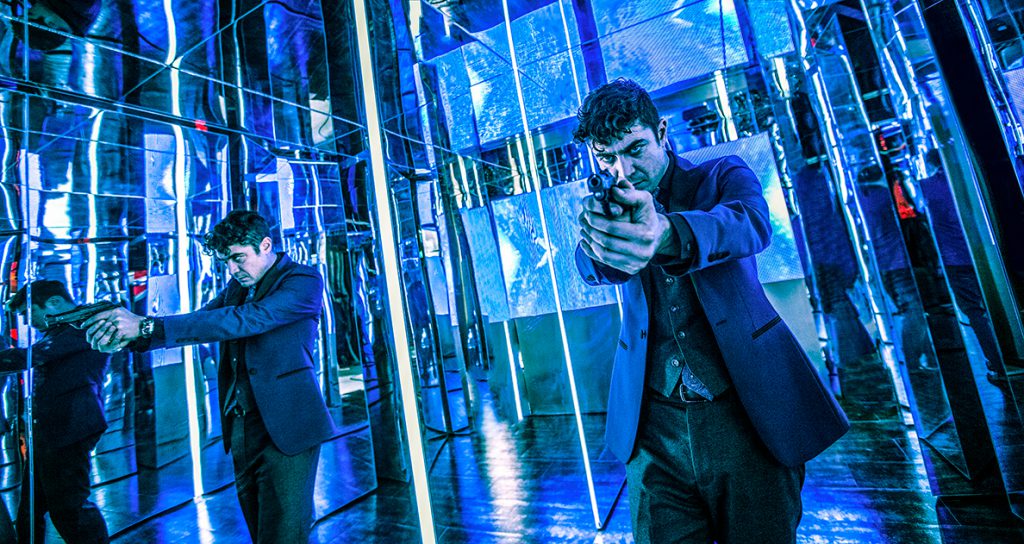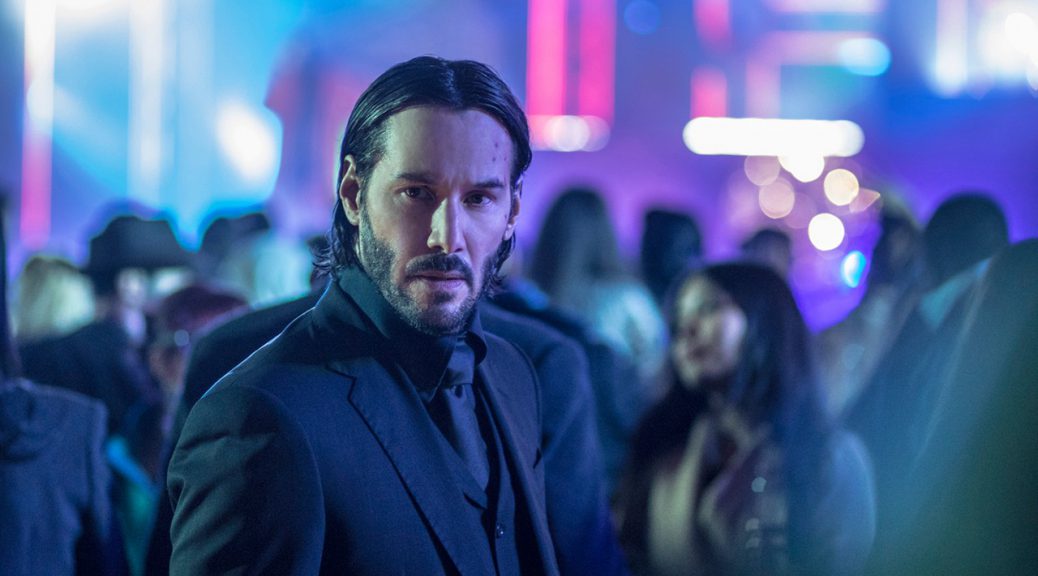By shattering conventions left and right while sticking to what made the first film so breathtaking, “John Wick: Chapter 2” is a stream-of-consciousness arthouse action film where the story, visuals and character blend together in visceral ambience.
It’s not often a film comes around that feels unique to the core, especially when looking at action flicks. After years of bland matinee-tier films like “Taken” and “A Good Day to Die Hard,” American action films have become somewhat of an anomaly in the cinematic world.
Thankfully, there’s John Wick. With style to spare, a minimalistic plot, and some of the most beautifully directed fight scenes ever put to celluloid, “John Wick: Chapter 2” proves without a doubt that arthouse action is still alive and well.

“John Wick” was one of 2014’s most surprising releases, seemingly coming out of nowhere. Starring Keanu Reeves during a relative career slump, with first-time directors and a February release date, expectations were low.
When it was finally released, the film caught many a critic off guard. Instead of a campy and low quality cash grab, audiences were given an ultra-modern, neon-drenched and fluid action masterpiece.
For the sequel, Reeves reteamed with director Chad Stahelski and writer Derek Kolstad to double down on the first film’s successes and blow the world of John Wick wide open.
The first film established John Wick (Keanu Reeves) as an emotional and relatable character, but it did so through his backstory and psyche. Typically, the best action heroes are the ones that audiences can project themselves onto. John McClane in the original “Die Hard” is a perfect example; a charismatic hero who acts based on understandable reasoning and who is shown to be both physically and emotionally vulnerable.
Wick, on the other hand, is a brooding hurricane of an action hero, tearing through endless waves of enemies like an untouchable force of nature.
Unlike many action stars, Reeves’ acting style is simplistic, understated and borderline emotionless. While this would normally be a death sentence in the genre, “John Wick” thrives on it. Wick’s deadpan stares and subtle humor mesh well with how the series is developing, more reminiscent of characters like Ryan Gosling’s refined roles in “Drive” and “Only God Forgives” than the boisterous and grizzled protagonists of modern blockbusters. Like much of the rest of the film, Reeves performance is minimalistic yet thoroughly impactful. As Reeves’ former stunt double, Stahelski knows how to push him to his limits, and by focusing on the unconventional, Reeves is given a chance to shine once again.

This destruction of stereotypical tropes and techniques plays into the style of the film as well. For one, “John Wick: Chapter 2” borrows a great deal from the recent neon noir film movement, with a visual style similar to films like the aforementioned “Drive,” “Only God Forgives,” “The Guest” and even a bit of “Blade Runner. Eminently modern, the film plays with stark contrasts between its grimy underworld and the crisp refined lighting of New York City, a dichotomy illuminated through visuals.
There are some homages to other flicks as well, particularly Japanese New Wave pieces like “Tokyo Drifter.” There are connections to its predecessor, of course, but Stahelski seems to have found his groove for where this franchise is heading, both in storytelling and visual flair. The clearly established stylization gives the film its own unique identity, which is always welcome.

“John Wick: Chapter 2” is a master class in cinematic composition. The combat is manic and rapid, but it has a smooth sense of style. There’s no uncomfortable Bourne-esque shaky cam or Matrix-style slow motion to be found here. Instead, the film is shot in a fluid, borderline ethereal manner. Every punch and broken bone is visceral and impactful, with each motion fusing together like a kinetic symphony. One sequence, filmed in a gallery of mirrors ala “Enter the Dragon,” smashes all normal action cinematic conventions, abusing the perspective of both the audience and Wick himself.
For all the neck snapping and pencil stabbing the film delivers, there are a few small quirks. Some of the fistfights play very similar to one another, with one in particular dragging on far too long, and Wick’s seemingly super-powered fighting style could be played down a bit to give some real tension and worry for viewers. That said, Wick feels markedly more at risk this time around, and the vast majority of the fights are filled with visual splendor.

In storytelling, this film gets a bit tricky. Shying away from the more personal and emotionally driven story of the first film, “John Wick: Chapter 2” feels like a postmodern version of an action film, with the story taking a back seat to the technical and choreographed marvels of the film’s exquisite action sequences. There is a plot, with John Wick on another quest for vengeance after he is forced back into the world that he strives to leave, but it’s barebones at best.
Screenwriter Derek Kolstad instead uses small clues in the environment and additions to the lore to expand the world of the film tenfold. The first film laid the groundwork for John Wick’s world, introducing a secret society of assassins governed by a “code,” but not much was explained. Here, that statement still rings true, with a caveat.
Instead of going out of his way to explain everything about the inner working of the shadow government, Kolstad gives audiences more questions to ponder. For instance, who is the high council? What is the marker and why are they used? Who really runs the show? One moment, Wick is fighting in a crowded train as passengers look on in uncanny relaxation, as if this is just par for the course. The next, he’s running through an empty New York City street. Everything feels slightly off and unbelievable, but there’s a definite sense something bigger is going on that still has to be revealed.
This approach to storytelling and world building is unique, but it may be lost on some viewers. Plot holes abound, but it feels as though the points are absent to make audiences think and try to piece together what’s really going on. It is narrative postmodernism, abandoning all notions of concrete storytelling to instead create an ambient world of mystery and questions. While some may find it jarring and underdeveloped, I argue “John Wick: Chapter 2”’s stylistic identity owes everything to its minimalism; a stream-of-consciousness film where the story, visuals and character blend together in visceral ambience.

This leads to another important point. While the first film was a self-contained piece, “John Wick: Chapter 2” is an exercise in expansion. Midway through the film, Santino D’Antonio (Riccardo Scamarcio) puts out a massive contract on Wick and sets the stage for an assassin Battle Royale. However, this plot point is only acted on once, and then pushed to the wayside for the climactic showdown between Wick and D’Antonio. The gravity of the contract lingers, and you’re left wondering when all these assassins will take their shots.
Luckily, the final scene shows Winston (Ian McShane), the owner of the New York City Continental Hotel, demonstrating his influence over the assassins as they turn silently, in full knowledge of what is to come. It sets the stage for the final chapter, which may be the biggest one yet.
That comes at a cost to the film at hand. Franchise films are known to have one foot in the future and one in the present, constantly clashing between future set-ups and the current narrative. “John Wick: Chapter 2” suffers from this flaw, with the main narrative acting more as a means to an end than a self-contained plot.
That’s also what makes the film unique. The story falls into the background to let audiences feel the world this time around, as the veil slowly lifts on the world’s mysteries.
“John Wick: Chapter 2” is the kind of unexpected masterpiece that helps the film industry grow. By shattering conventions left and right, and instead focusing on both narrative and minimalism, Stahelski and company have proved their mastery for modern art-house action.
A vast circulatory mélange of movement and sound composed with deft hands, “John Wick: Chapter 2” is a postmodern masterpiece of action filmmaking.
